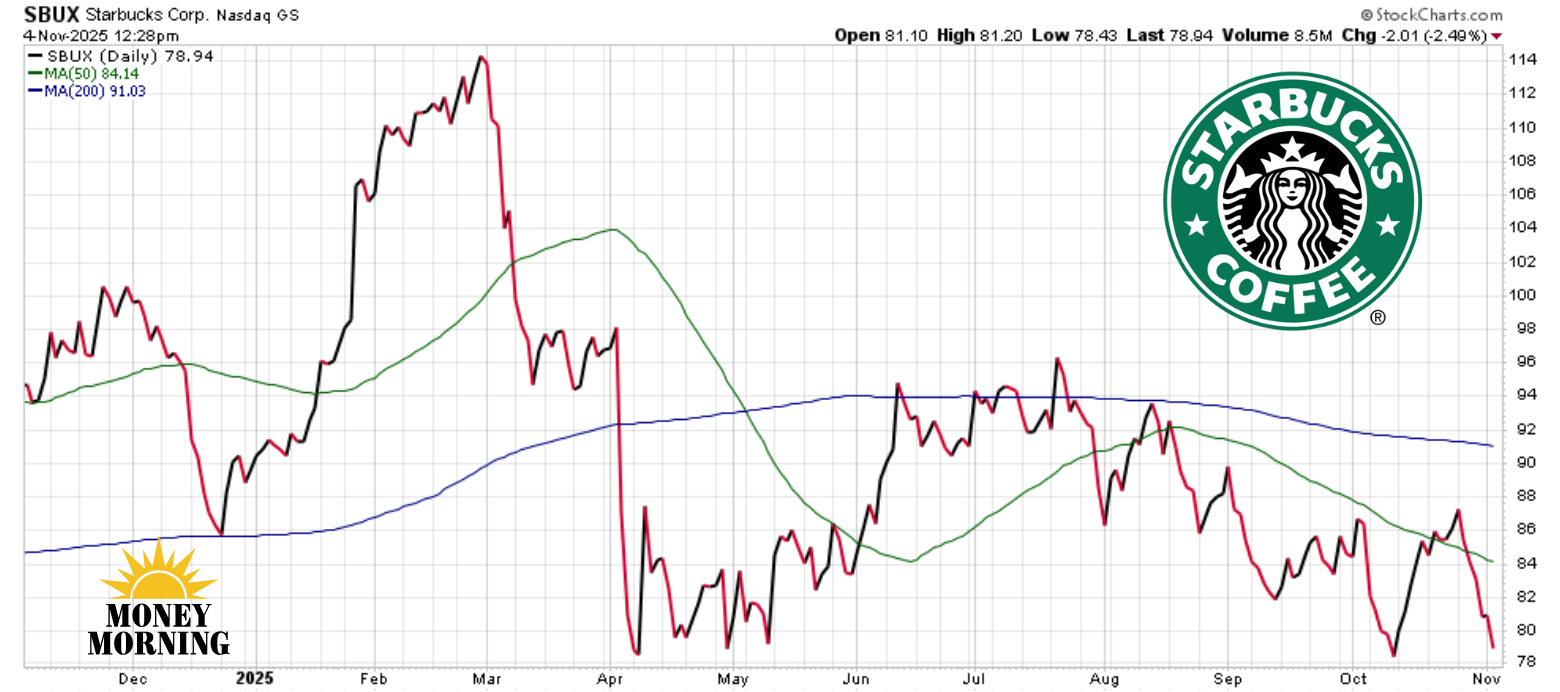Starbucks Bitter Brew: Coffee Shop Beating Swift Retreat In China
Image Source: Unsplash
For years, China has been hailed as a cornerstone of Starbucks' (SBUX) global expansion strategy, with the company aggressively pursuing market dominance since entering in 1999. Executives once projected it as the engine for long-term growth, aiming for thousands of stores amid rising middle-class demand for premium coffee.
However, recent years have seen Starbucks stumble, unable to gain traction against fierce local competition like Luckin Coffee, which has surged ahead with over 26,000 stores, leveraging aggressive pricing and digital innovation. Luckin's rapid ascent, including surpassing Starbucks in store count and sales in China, has eroded SBUX's market share, prompting a strategic retreat.
What began as bold determination to conquer the world's largest consumer market has now shifted to a hasty exit, underscored by the sale of a 60% stake in its China operations.
(Click on image to enlarge)

Fast Boat Out of China
Starbucks announced the deal with Boyu Capital, a Chinese private equity firm, forming a joint venture where SBUX retains 40% ownership. Boyu clinched the bid by emphasizing its market expertise and pledge to maintain the existing management team, ensuring continuity in turnaround efforts.
This move comes as Starbucks grapples with sluggish performance in its second-largest market, where economic pressures and nationalist preferences have favored homegrown rivals.
Starbucks challenges extend beyond China. In the U.S., cash-strapped consumers are cutting back on discretionary spending, squeezing margins. New CEO Brian Niccol has rolled out the "Back to Starbucks" initiative, including eliminating non-dairy milk surcharges and cafe overhauls. While some changes have boosted shift completion rates to 98.2% and shown sequential sales improvements, not all ideas – like potential 2026 price hikes amid rising coffee costs – have been warmly received.
Investors remain skeptical and SBUX stock has declined over 13% since Niccol's appointment, hovering around $80 per share.
Echoing past vulnerabilities, SBUX plummeted about 80% from peak to trough during the 2008 Great Recession, forcing 600 store closures and a 28% profit drop. Today, technical indicators signal caution: for the first time since 2008, the stock's 50-month moving average is trending lower, suggesting Starbucks is grappling with more than cyclical headwinds – it's facing structural hurdles that could persist without aggressive turnaround strategies.
If economic headwinds intensify into a recession, SBUX could face another rough patch, testing Niccol's revival plan amid ongoing stock declines.
More By This Author:
Five Stock Watchlist: AI And Nuclear Stocks Lead This Week’s TradesThis Is Where Rare Earth Stock UUUU Is A Strong Buy
Taiwan Semiconductor Still Has Room To Run — And The Math Shows Where




